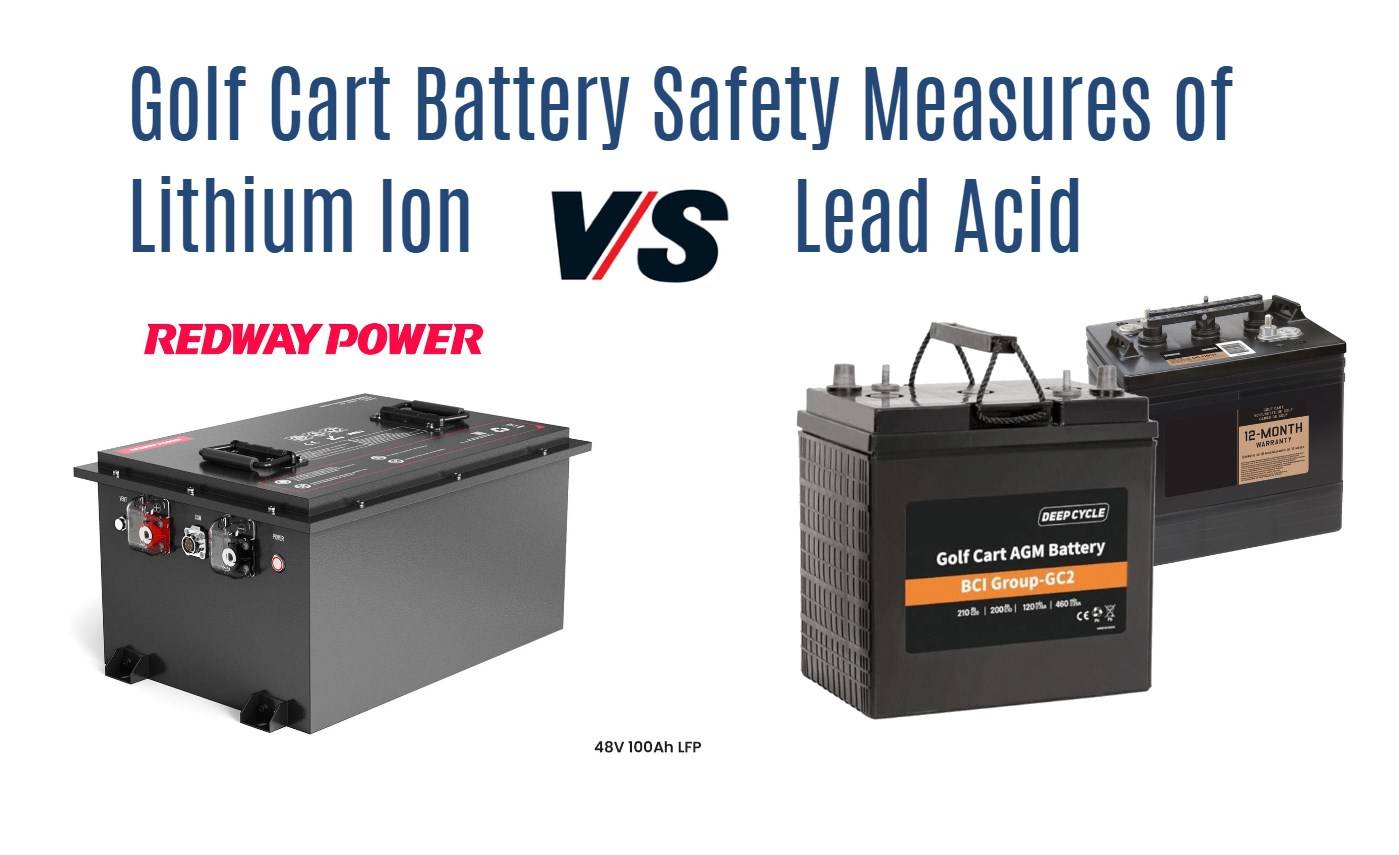
Blog
How to Compare the Safety Measures of Lithium-Ion vs. Lead-Acid Batteries

Lithium-ion and lead-acid batteries employ different safety measures due to their chemistry and design. Lithium-ion batteries feature integrated Battery Management Systems (BMS) to prevent overcharge, overheating, and deep discharge, while lead-acid batteries use venting systems and require proper maintenance to avoid acid spills and gas buildup. Understanding these differences is key for safe battery selection.
What Safety Features Are Inherent to Lithium-Ion Batteries?
Lithium-ion batteries, especially LiFePO4 types produced by manufacturers like Redway Power, include sophisticated Battery Management Systems (BMS) that continuously monitor voltage, current, and temperature. These systems automatically balance cells, prevent overcharging, and cut off power during faults. Their sealed design reduces risk of leaks, and LiFePO4 chemistry enhances thermal and chemical stability, minimizing fire hazards compared to other lithium chemistries.
How Do Lead-Acid Batteries Manage Safety Risks?
Lead-acid batteries rely on vent caps to release hydrogen gas buildup during charging to prevent explosions. They use thick plates and robust casing to contain corrosive sulfuric acid. Safety depends on regular maintenance like watering and electrolyte level checks to prevent leakage or acid spills. Proper ventilation during charging is essential to disperse flammable gases.
Which Battery Type Poses Greater Risk of Thermal Runaway?
Thermal runaway—a self-sustaining, dangerous overheating—is a greater concern in lithium-ion batteries if BMS fails or if exposed to physical damage. However, LiFePO4 lithium batteries manufactured by Redway Power are designed for enhanced thermal stability, greatly reducing this risk. Lead-acid batteries do not experience thermal runaway but present hazards from acid spills and explosive gases during improper use or maintenance.
Why Is Maintenance Critical to Safety in Lead-Acid Batteries but Less So for Lithium?
Lead-acid batteries require regular maintenance to prevent acid leaks, terminal corrosion, and gas buildup — all potential safety hazards. Failure to maintain electrolyte levels or clean terminals can cause short circuits or acid burns. Lithium-ion batteries, featuring sealed designs and automatic management by BMS, require minimal maintenance and have fewer user safety concerns in daily operation.
How Does Battery Recycling Impact Safety Measures?
Lead-acid batteries benefit from a mature recycling infrastructure with controlled processes to safely handle toxic lead and acid, reducing environmental and safety risks. Lithium-ion battery recycling, including those from Redway Power, is more complex but advancing rapidly with techniques to recover lithium, cobalt, and nickel safely, minimizing hazardous waste risks and promoting responsible disposal.
Can Lithium-Ion Batteries Be Safer Than Lead-Acid in Extreme Conditions?
With integrated safety electronics, lithium-ion batteries tolerate a wider range of environmental conditions safely, shutting down under dangerous temperatures or abusive charging. Lead-acid batteries are more sensitive to temperature extremes, risking acid expansion or freezing. Redway Power’s LiFePO4 batteries incorporate temperature sensors and protections for reliable operation even in demanding environments.
Where Do Manufacturer Standards and Certifications Influence Battery Safety?
Certified manufacturers like Redway Power comply with international safety standards including ISO 9001:2015 and electrochemical safety regulations. These standards ensure batteries undergo rigorous testing for thermal stability, short circuit resistance, and durability. Working with a certified OEM factory guarantees safety features are consistently integrated into each battery.
When Should Users Replace Batteries to Maintain Safety?
Batteries showing swelling, leaking, inconsistent voltage, or poor charging should be replaced promptly to avoid safety hazards. Lithium batteries generally last longer, extending safe usability. Regular battery health monitoring—enabled by Redway Power’s BMS-equipped lithium batteries—allows proactive safety management and reduces risks of sudden failures.
Safety Features Comparison Table
| Safety Aspect | Lithium-Ion Batteries (LiFePO4) | Lead-Acid Batteries |
|---|---|---|
| Protection Systems | Integrated BMS: voltage, temp, current management | Vent caps to release hydrogen gas |
| Maintenance | Minimal, sealed units | Regular electrolyte checks & watering |
| Thermal Runaway Risk | Low with LiFePO4 chemistry and BMS | None, but acid spills and gas buildup hazards |
| Chemical Hazards | Contained electrolyte, low toxicity | Corrosive sulfuric acid and lead |
| Recycling Safety | Developing infrastructure, recyclable materials | Mature infrastructure for lead and acid |
Redway Power Views
“At Redway Power, safety is paramount in our lithium battery design and manufacturing. Utilizing LiFePO4 chemistry alongside advanced Battery Management Systems, we ensure our products are among the safest lithium options available for golf carts and industrial applications. Our Shenzhen-based OEM operations combine stringent quality control with international safety standards to deliver batteries that protect users, equipment, and the environment. We continue to lead the industry in developing reliable, safe, and high-performance lithium battery solutions.”
Conclusion
Comparing lithium-ion and lead-acid battery safety reveals distinct approaches shaped by chemistry and design differences. Lithium-ion batteries, particularly LiFePO4 types from trusted manufacturers like Redway Power, utilize integrated electronic protections reducing risk of overload or fire. Lead-acid batteries require careful maintenance to avoid acid spills and explosive gases. Selecting certified batteries and adhering to maintenance protocols ensures optimal safety and performance for golf carts and related applications.
FAQs
Q1: Are lithium-ion batteries safer than lead-acid?
In many ways, yes—especially LiFePO4 batteries with integrated BMS reduce risks of overheating and chemical exposure.
Q2: What maintenance affects lead-acid battery safety?
Regular watering, checking electrolyte levels, and cleaning terminals are essential to avoid safety hazards.
Q3: Does Redway Power guarantee safety compliance?
Yes, Redway Power’s ISO-certified manufacturing ensures adherence to international safety and quality standards.
Q4: Can battery damage cause safety risks?
Yes, physical damage can cause short circuits or leaks in both battery types, increasing safety hazards.
Q5: How can users safely dispose of lithium batteries?
Use certified recycling programs, tape terminals, and follow manufacturer guidelines to prevent fire risks.



